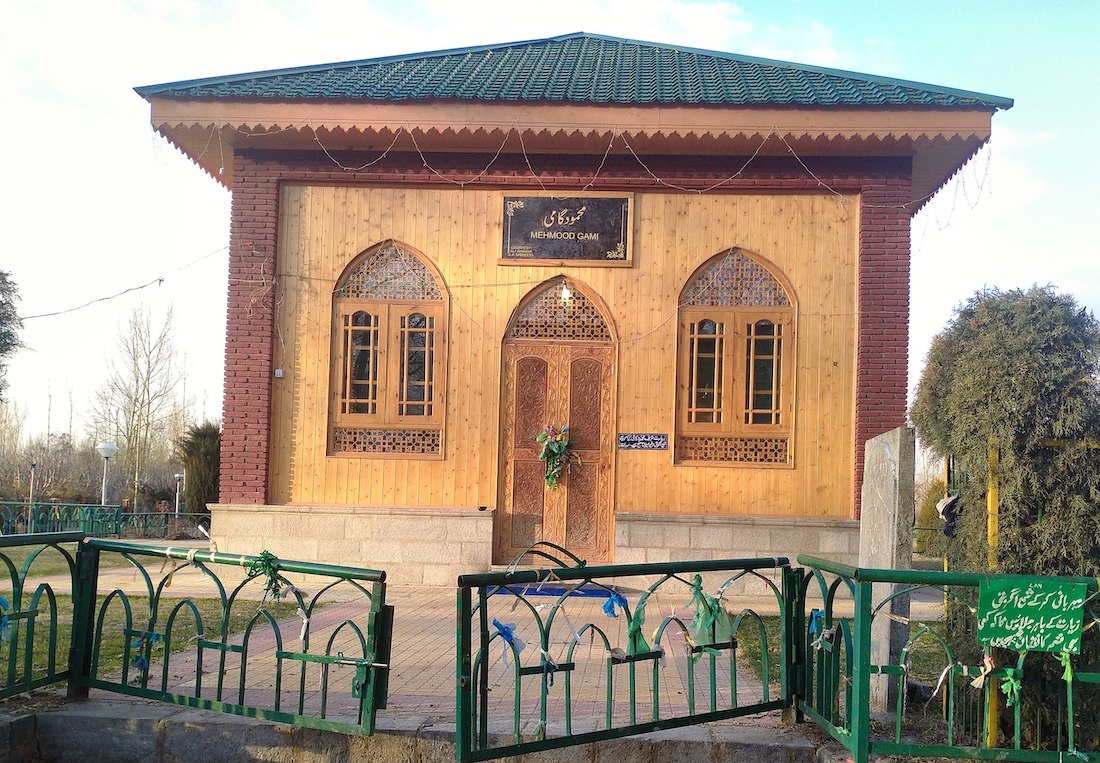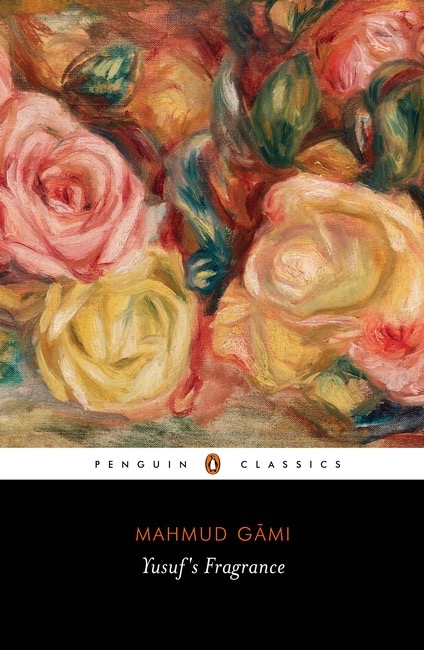University of Kashmir professor, Mufti Mudasir is discovering great Kashmiri poets for the English readership. After translating Gani Kashmiri, and Mehmud Gami, he was part of a wider effort to convert part of Rehman Rahi’s poetry into English. In this piece, he offers basic details of the life and contributions of Mehmud Gami, one of Kashmir’s towering poets
Banish my grief, O living Prophet!
Give me a cure, O living Prophet!
The verse, “By the night”, extols your hair
And “By the bright morn”, alludes to your shining face
These lines are from a naat by one of the greatest poets of the Kashmiri language, Mahmud Gami. It was while reading and translating Gami for a Penguin Classic volume Yusuf’s Fragrance: Poems of Mahmud Gami (Penguin Books, 2022) that I realised what a literary stalwart he was. Even a quick look at the stanza above reveals Gami’s poetic acumen and love for the Prophet Muhammad (peace be upon him).
Naats are just a small portion of his prolific output, which includes masnavis (long narrative poems), vatsuns (an indigenous Kashmiri lyric), ghazals and nazms. I also learnt that his contribution to Kashmiri poetry is unique both in its scope and depth. Not only is he the first truly prolific poet of Kashmiri, but much of his poetry also stands out for its beauty of expression and depth of thought—touchstones by which we generally measure a poet’s value.
The Birth
Born in 1765 in Aadveder village in Shahabad, South Kashmir, now renamed Mahmudabad after him, Gami lived a long life and died there in 1855. There is sufficient evidence to suggest that Gami was quite popular even during his lifetime.
Gami’s real name was Mahmud Shah. He adopted the pen name Gāmi to rhyme with Nizami and Jami, the two great classical Persian poets and his literary models and not, as some have speculated, as a proud marker of his identity as a villager because some city snobs had derided him as a gami (villager).
Gami must have received religious education at home and the local madrasa according to the norm of the day, giving him a basic knowledge of Arabic and Persian. That he knew Persian well and also wrote poems in it is beyond doubt. He probably began to versify in Persian before turning to Kashmiri. According to some sources, in the early years of his life, he earned his living as a teacher. Later, he became a popular village pir, a highly respected man sought by people for guidance in religious and spiritual matters.
Gami was born during the Afghan rule (1749-1819) and died in 1855, a few years after the Dogras had taken over Kashmir following the Treaty of Amritsar in 1846. He thus witnessed three regimes during his lifetime including the Sikh rule (1820-1846) but much like most poets of his age, there is next to nothing in his poetry related to the social or political conditions of his times. In Gāmi’s entire corpus, there is perhaps only one instance where a contemporary event of significance is dealt with: an elegiac poem written on the death of Abdullah Khan Alkozay, an Afghan governor of Kashmir (1796-1806) whom he praises highly for his justice and kindness.

Gami and Rasul Mir
Some anecdotes originating in the countryside bring together Gāmi and his younger contemporary Rasul Mir in a single story frame with the former making certain predictions about the latter. These indicate how Rasul Mir was already seen as the rightful successor of Gami in the popular imagination.
Anecdotes suggest Gami met young Rasul Mir and, after gauging him, exclaimed, “ames chi jane margi hind karen!”, an expression with an equivocal meaning: (a) this young man holds an exceptional promise (b) this man will die young.
The words proved prophetic as both meanings came true. Mir died young but only after he had made his mark as an exceptionally good poet. A cursory look at Rasul Mir reveals many thematic and stylistic debts to Gāmi. A closer look can bring out many aspects of this poetic influence.
While Rasul Mir emulated and perhaps even excelled Gami in lyrical poetry, he did not attempt other forms, especially the masnavi. Similarly, although Maqbool Shah wrote perhaps the artistically most consummate masnavi, Gulrez in Kashmiri, he did not make a similar mark in lyrical poetry. Gami thus stands alone as a trendsetter in multiple genres of Kashmiri poetry.
Trend Setting Poet
Gami pioneered a new literary form—translation-adaptation and is the first major poet-translator working between the cosmopolitan Persian and vernacular Kashmiri. Gami’s conscious borrowing from the Persian masters signals the extent to which a major Kashmiri poetic voice was ready to appropriate the Persian literary tradition, thus “announcing a symbiosis through emulation”.
Apart from writing lyrics, he wrote narrative romances, and devotional poems in praise of the Prophet Muhammad and thus gave Kashmiri an impetus it badly needed. His oft-repeated invocation of Nizami and Jami towards the end of his masnavis suggests that he aspired to be placed among the great masters of Persian verse and saw his Kashmiri adaptations as a continuity of rather than a break from the Persian tradition.
Countless blessings of God be on Nizami
A servant at his door is Mahmud Gami
or:
Jami had told this tale of Zulaykha
Gami says the same in Kashmiri
Again, in a naat Gāmi writes:
Nizami sings your praise
Jami extols your virtues
What more can Gami say?
O God’s messenger, blessings on you!
With him, a barren period of Kashmiri poetry came to an end and the language witnessed an extraordinary flourishing of poetry in many genres. Gami’s decision to choose Kashmiri instead of Persian for his poetic expression proved to be a momentous one as it served as a model and inspiration for future poets. Interestingly, there is hardly any mention of any Kashmiri poet in Gāmi while Persian poets like Nizami, Attar, Rumi and Jami are mentioned often. What explains Gami’s decision to draw prodigiously from the Persian literary sources was, partly at least, the near absence of a rich surviving poetic heritage in Kashmiri.

Gami’s Sufi Themes
Sufi themes inform Gami’s poetry more than anything else. Let us look at some of his major poems to get a feel of his creative genius. For Sufis, Man is the microcosm and the Universe the macrocosm, reflect each other as two mirrors facing each other. In a poem titled Dard-eNaystan (The Reed Bed’s Pain), Gami dwells on the idea of nothingness before the creation of the world and the ‘I’ that first brought everything else into being:
A musical note fell into my ears
I will sing of the reed bed’s pain
God’s throne was not yet built
He sat in an emptiness of vast expanse
There was no count of days or years
I will sing of the reed bed’s pain
No rain fell, no crops grew
Chaos held sway everywhere
The ‘Word’ was unborn, the path unknown
I will sing of the reed bed’s pain
Adam and Eve were uncreated yet
Only the almond orchard bloomed
No grain was eaten, no leaf fell on the ground
I will sing of the reed bed’s pain
This prodigal sea has inebriated many
Reason and Intelligence stand wonder-struck
Essence manifested itself through Attributes
I will sing of the reed bed’s pain
Mahmud bears witness to the coming of being
Being owes its existence to ‘I’
‘I AM’ is what Mansur did proclaim
I will sing of the reed bed’s pain
The poem is strikingly reminiscent of the opening of Rumi’s masnavi, The Lament of the Reed-Flute. While in Rumi the reed-flute laments its tearing away from the reed bed and longs to reunite with it, Gāmi projects the lament onto the reed bed. In Gami, it is the reed bed, which becomes a symbol of the Primordial Reality and the poem is a threnody articulating its great yearning for self-manifestation.
Again, while Rumi deals with the idea of separation from the point of view of the reed flute, Gāmi tackles a deeper mystery: why did the separation take place at all? Making its way through a dense thicket of metaphors and mystical allusions, the poem provides an answer at the end—it is ‘I’, proclaimed so audaciously by Mansur, though at his peril—that holds the key to the puzzle of being.
The Moth’s Tale
Gami’s other poem Pompir Namah (The Moth’s Tale) exploits the well-known image of a moth sacrificing itself on the candle’s flame. Here the idea of love as self-sacrifice that guarantees immortality takes the form of a delightful dialogue between the moth, a symbol of utmost devotion and sacrifice, and other insects, the on-lookers who are bewildered by the self-immolating passion of the moth. Only those who are ready to sacrifice themselves for the sake of love earn immortality.
The flies searched for a candle frantically
and found one burning alone.
They pledged their love
and fluttered around its flame.
But flinched from flinging themselves into
its devouring fire.
Alas for those who set out in earnest
but leave the journey halfway!
Such stragglers only bring
shame to the lovers.
And then the moth rushed to the flame
and burnt himself up,
without a sob, a cry or a complaint.
He did the lovers proud.
Alas, no one has the courage of the moth!
And no one nears what he conquers with ease
Mahmud, dying for the Friend is the highest bliss
One who dies for love dies the death of a martyr

The Parable of A Man
In yet another powerful poem Tamsil-e Adam (The Parable of Man), Gami weaves a beautiful tapestry of interconnected images held together by a central image—that of an air bubble in the water.
The poem starts with a question, which runs through it as a refrain in the original: how is it that the bubble survives amid water? The bubble, the poem suggests, has no existence apart from the water that surrounds it. The likeness of man to the bubble lies in this: just like the bubble originates in the water and is constantly sustained by it, man too originates in God and lives his every moment only through unremitting sustenance from Him. Thus, like the bubble which has no existence outside the water, man has no existence outside of God or the ‘great ocean of being’ as mystics sometimes put it.
I inquired of the bubble
the parable of man
“Reveller, how do you stay alive in water?”
“Clutch at the rope of contemplation,
Pull at the pulley of remembrance.
Your soul’s wheel will whirl in a dance
like it’s pulled with a rope.
Let not joys and dreams waylay you”.
Out of love
the Lover blew,
the bubble was born.
He blew again,
it mingled with water.
What has perished?
What left for reckoning?
The Love and Loss
Many of the poems combine verses celebrating love’s joys and those dealing with its trials, its fears and losses, and other vicissitudes attendant upon it:
How can I be merry when
the pain of love frets my heart?
I can only weep.
Love’s raging fire melts my marrow
Its morbid fever scorches my liver
I languish in despair
Give me a cure.
Yusuf Zulaykha
Gami’s masnavis, which are long narrative poems on the theme of mystical or earthly love, are among the best written in Kashmiri. He is aware of his rare gift of telling tales. In Yusuf Zulaykha his most popular masnavi, he writes:
Listen to poor Mahmud’s wails
His wonderful gift of telling tales
Yusuf Zulaykha was first translated into Latin by the German Orientalist Karl Bukhardt, who spent some years in Kashmir, in 1895. Betrayal, envy, jealousy, reunion, forgiveness, patience, filial impiety etc all feature in Yusuf and Zulaykha.
Gami, following Jami, projects Zulaykha’s love for Yusuf as a manifestation of divine love and nowhere suggests an indictment of her acts. The story, therefore, becomes less of a moral tale than an allegory for the nature of true love. Rather than presenting Zulaykha as a dangerous scheming seductress, Gami’s poem inscribes her in his paradigm of the eternal relationship between beauty (jamal or husn) and love (ishq).
Zulaykha becomes a symbol of love’s eternal yearning for beauty symbolised by Yusuf. When the two finally meet, Yusuf restores her to her earlier state of beauty and receives divine sanction to marry her. The love that Yusuf feels for her suggests that Zulaykha is rewarded for her unswerving devotion and fidelity to Yusuf. Her death out of grief for Yusuf marks the culmination of the idea of love as total self-sacrifice.
A Persian Love Storey
Gami’s another masnavi Sheikh San‘an is a poem adapted from a story in Attar’s Mantiqu Tair about a Muslim savant who becomes miserable after falling in love with an infidel girl. In Attar’s story, the girl is Christian and a resident of Rome. Gami replaces the Christian with a Hindu girl and uses local markers to give a native touch to the poem. Curiously though, the setting is still Rome, the heartland of Christendom.
A remarkable thing about the poem is the inclusion of a song in it where San‘an gives vent to his deep love for the unnamed Hindu girl. Quite in keeping with Gāmi’s practice in other masnavis, the song here breaks the flow of the otherwise quick-paced narrative.
At your bidding Sheikh San‘an renounced his piety
O Hindu girl, my bewitching love, give ear to my wails!
The world is a mirage, how many have wasted away!
Heal my pain, be pleased with me, my love is very deep
Don’t put on airs, all lives will end on a shriek of mourning
O Hindu girl, my bewitching love, give ear to my wails!
The girl, conceited and dismissive of San‘an to begin with, gives in before the beseeching lover on the condition that he forsake his faith, burn his scripture and become her swineherd, all extremely abominable acts in the eyes of a Muslim. The woebegone Sheikh agrees. He abjures his religion and devotes himself wholeheartedly to her.
Shocked by this, his disciples returned with heavy hearts to Mecca but continued to pray for their master’s redemption. Finally, their prayers are answered. Sheikh San‘an is reclaimed but only after love has transformed him entirely. His transformation lies in awakening to the importance of sacrifice and the true meaning of love—without sacrificing one’s dearest things there can be no real worship. In loving an infidel girl Sheikh San‘an sacrificed his very high reputation and honour as a great sage and leader of the believers. Love, Gami suggests, demands such sacrifice.
Lack of space does not allow me to say more about his other masnavis, Khusrau Shirin, Layla Majnun, Mansur Namah, Paehel Namah etc all of which any lover of poetry will find riveting. I can only wish that all those who love Kashmiri literature make an effort to explore the richness of his poetry. They will, I am sure, reap rich dividends of the time and energy they invest in Gami.
(Mufti Mudasir is a Professor at the Department of English, University of Kashmir. This piece draws on his book Yusuf’s Fragrance: Poems of Mahmud Gami. Penguin Books, 2022)















